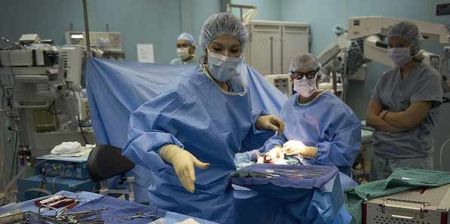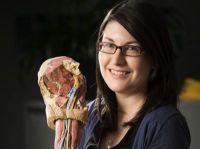According to study findings published by researchers from the Universities of Sydney, Harvard, Stanford and MIT, the ‘bio printing’ of transplantable organs and tissues is one step closer.
Successfully growing large complex tissues requires artificial vascular networks that imitate the human body's circulatory system: the team of scientists has successfully bio-printed such a network environment.
University of Sydney researcher and the study’s lead author Dr Luiz Bertassoni highlighted that countless patients lack the donor organ they need, with thousands of them dying each year as a consequence. He explained the team’s aim: "Imagine being able to walk into a hospital and have a full organ printed -- or bio-printed, as we call it -- with all the cells, proteins and blood vessels in the right place, simply by pushing the 'print' button in your computer screen.”
While acknowledging that there is still a long way to go until this stage is reached the team considers the printing of ‘prototypes’ an important new step towards their goal. The main challenge lies in vascularisation, the networking of cells with full blood supply, in order to give them access to oxygen and nutrients to sustain life, as well as provide a working 'waste disposal'.
Dr Bertassoni stressed the importance of a functional transportation system to the complex biological organ and tissue engineering process by clarifying that each cell is only a hair’s width away from a supply of oxygenated blood.
Replicating this intricate network has now been achieved through the use of a high-tech 'bio-printer'. The research team made up a multitude of interconnected tiny fibres, which established the mold for the artificial blood vessels.
As a next step, this 3D printed structure was covered with a cell-rich protein-based material, and the application of light solidified it. Once the bio-printed fibres were removed, a network of tiny channels coated with human endothelial cells was exposed. These cells then proceeded to self- organize, forming stable blood capillaries in less than one week.
In comparison to cells which had not received any nutrient supply, this artificially printed vascular network showed enhanced cell survival, proliferation and differentiation.
Dr Bertassoni was enthusiastic about the team’s achievement and called it a ‘game changer’. While it has previously been possible to recreate small parts of tissue, the new process allowed for enough precision to match individual patients' needs.
Latest Articles
Vascular, organ transplantation, cells, blood cells, 3d printing technology, organs
According to study findings published by researchers from the Universities of Sydney, Harvard, Stanford and MIT, the ‘bio printing’ of transplantable o...



























